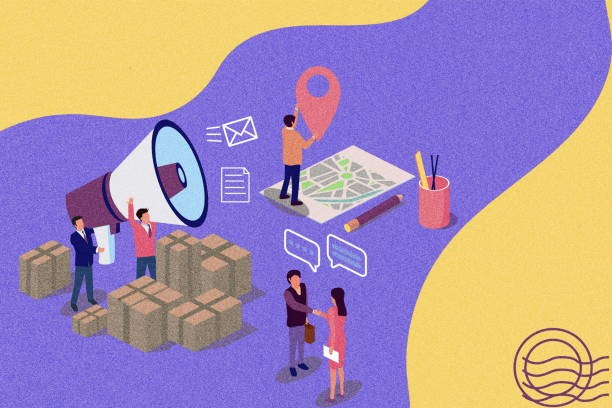The most powerful business tool might just be a map in today’s digital landscape. Consumers now rely on navigation apps more than advertisements when choosing where to shop or eat. With the help of local SEO services, brick-and-mortar stores can turn digital maps into foot traffic gold.
Digital Maps Are the New Billboards
People discovered businesses through radio, newspapers, and flashy banner ads years ago. Now, they open Google Maps or Apple Maps to explore nearby options. These tools offer instant answers and directions with a few taps.
What makes maps so effective is that they respond to intent. When someone searches “bookstore near me,” they’re likely ready to visit that day. Maps show not just who’s nearby, but who’s open, rated well, and easy to get to.
For many, maps are more trustworthy than ads. They offer user-generated content like reviews, photos, and Q&As, which feel more authentic. This information-rich environment makes it easier to decide where to go.
Visibility In Maps Outperforms Paid Ads
Paid ads still play a role in marketing, but they often miss customers in high-intent moments. A map listing, on the other hand, appears right when people are actively looking for a solution. That timing makes all the difference.
Organic visibility on Google Maps or Waze often leads to higher conversion rates than display ads. When someone taps for directions or calls your store directly from a map, they’re further along in their decision. You’re not just creating awareness—you’re getting action.
Unlike traditional advertising, maps meet the customer at street level. Users want fast, relevant answers whether they’re walking, driving, or biking. Being visible in these tools is like literally placing your store on the customer’s path.
How Navigation Apps Influence Decisions
Today’s consumers are mobile-first. Whether new in town or looking for something quick, they trust their navigation apps to guide them. These apps don’t just offer directions—they shape decisions.
Google Maps now highlights businesses based on real-time data, like how busy a place is or whether it’s open now. Features like “popular times” and “people also search for” guide users before they click through. This level of detail gives maps an edge over generic banner ads.
Navigation apps are also smart enough to personalize suggestions. They learn from user behavior—past visits, reviews, likes—and suggest businesses that match individual preferences. Ads can’t offer that level of precision unless users are already deep in the funnel.
The Role Of Local Listings And Reviews
Your map visibility isn’t just about your location but your reputation. Reviews, ratings, and responses shape how often your listing is shown. A well-maintained profile can outrank a competitor who pays more for ads.
Encouraging satisfied customers to leave positive reviews builds trust. Even a handful of recent, thoughtful comments can improve your visibility. Many users rely on these insights to choose between two similar businesses.
Photos and Q&A sections also matter. A bright storefront image or a helpful answer to a common question can tip the scales. These content pieces do the job of selling, without any ad spend.
Optimizing Your Business For Map Discovery
To boost your map presence, claim and complete your Google Business Profile. Include accurate contact info, business hours, and a strong description. The more details you provide, the easier it will be for search engines to recommend you.
Use local keywords in your business description, such as neighborhood names or landmarks. This helps align your listing with local searches. Upload fresh photos regularly to keep your profile engaging and relevant.
Encourage customer interaction—ask for reviews, respond to questions, and monitor your insights. These signals tell Google your business is active and trustworthy, and engagement often leads to more visibility in map search results.
Real-World Impact: From Clicks To Customers
The transition from online discovery to in-person visits is now seamless. A customer might find your business in a map app, click to see reviews, check hours, and hit “directions” in under a minute. That entire journey happens without a single traditional ad.
Tracking tools like Google Business Insights show how many people requested directions, called, or visited your website. These metrics reflect true intent and help you fine-tune your local strategy. The numbers tell a clear story: visibility on maps drives real-world results.
Innovative businesses are investing in map-based visibility, not just flashy campaigns. When someone’s five minutes away and hungry, they don’t need a slogan—they need a pin on a map.
Conclusion
Digital maps are redefining how customers discover brick-and-mortar stores. They offer targeted, real-time visibility that outperforms many traditional ads. With expert support from local SEO services, businesses can turn map presence into measurable, lasting foot traffic.

